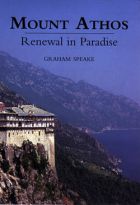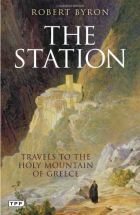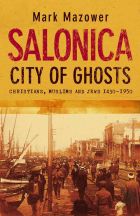Buy or gift a stand-alone digital subscription and get unlimited access to dozens of back issues for just £18.99 / $18.99 a year.
Please register at www.exacteditions.com/digital/cornucopia with your subscriber account number or contact subscriptions@cornucopia.net
Buy a digital subscription Go to the Digital EditionFor more than a millennium Ayanoros, better known to the West as Mount Athos, has been a spiritual beacon to Orthodox believers. Yet the world’s oldest political entity flourished most brilliantly under Ottoman rule. Two scholars who have had a lifelong interest in this jealously isolated community give a unique insider’s view. Anthony Bryer, the eminent Byzantanist, who visited Mount Athos for the first time 40 years ago and found this extraordinary community on the brink of the 20th century, gives a personal account. Graham Speake, as secretary of the Friends of Mount Athos, has been in a privileged position to take the photographs
Mount Athos is a peninsula east of Salonica cloaked in forests of oak and topped by a cloud-wreathed marble peak rising 2,033 metres out of the Aegean Sea. Since the tenth century, hermits and communities of monks have settled here. It is not the stunning beauty of the place that has attracted them, so much as the ascetic convenience of the Holy Mountain. A safe haven from the world, and the home since the 14th century of the influential Quietist movement, Athos has been a spiritual exemplar for the Byzantine and all Orthodox churches.
In 1958 I wanted to get to Byzantium: very fast. Between laying down pen as a National Serviceman and taking up arms as an undergraduate, there was not time to visit Turkey or Greece, but just enough to grow a beard and get to Athos.
Here was living Byzantium, where distances were measured in hours along ribbed mule tracks, where the hours of night were anyway only approximate at the solstices, where all clocks were wrong and the sure time was sunset, when the gates of the miniature walled towns called monasteries shut, leaving you out for the night on a bare mountain. So on August 19, AM 7466 of the Byzantine calendar, I presented myself to the Holy Fathers, who affixed a four-part seal to my visa to Athos, only the 748th issued that year.
I had spent the previous night (being September 1, 1958 AD, secular time) in the tower of Andronikos II at Prosphori. The difference of date (which is why the Russian October Revolution actually happened in November) gave just enough time to grow a beard out of which a comb kept falling, to demonstrate my gender, for women and eunuchs do not cross the border at Prosphori…
Here was living Byzantium, where distances were measured in hours along ribbed mule tracks, where the hours of night and day were anyway only approximate at the solstices, where all clocks were wrong and the only sure time was sunset, when the gates of the miniature walled towns called monasteries shut, leaving you out for the night on a bare mountain…
A glorious thistle, the globe artichoke merits better than the usual simple boiling, especially if it is the giant Turkish globe, with its huge mouth-watering centre. Berrin Torolsan reveals how to do it justice
Out of sight of the sea, high above Göcek Marina at Huzur Yadisi, another green peace prevails. In a hidden valley, Richard Tredennick-Titchen found an encampment of yurts that dramatically changed his life.
One of Turkey’s finest birds is the grouse-like Caspian snowcock. To find it takes some organising, for it lives way above the summer pastures in remote areas such as the Aladaglar, the highest part of the Taurus Mountains.
On the Great Lake of the Catherine Palace at Tsarskoye Selo, outside St Petersburg, stands this peaceful Turkish bath, an ironic legacy of a century of intermittent warfare
In the garden we may take them for granted, but in the wild, their colours make the heart sing. Andrew Byfield celebrates the vibrant beauty of Turkey’s primulas.





Cornucopia works in partnership with the digital publishing platform Exact Editions to offer individual and institutional subscribers unlimited access to a searchable archive of fascinating back issues and every newly published issue. The digital edition of Cornucopia is available cross-platform on web, iOS and Android and offers a comprehensive search function, allowing the title’s cultural content to be delved into at the touch of a button.
Digital Subscription: £18.99 / $18.99 (1 year)
Subscribe now